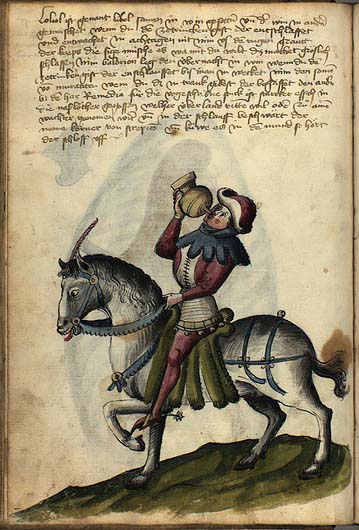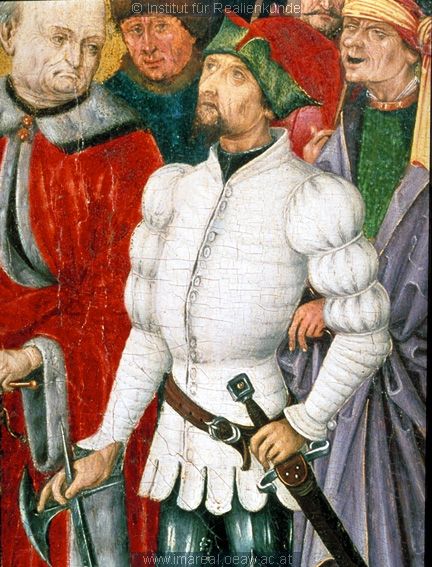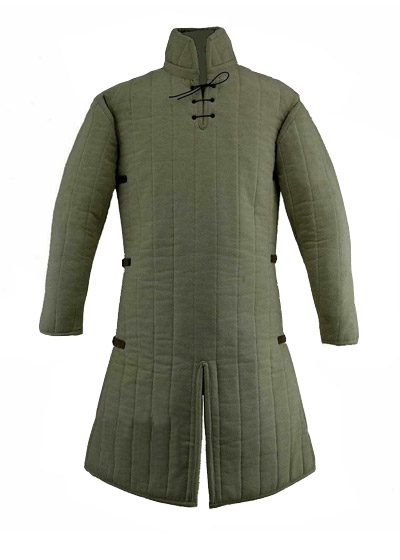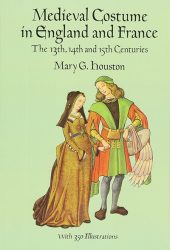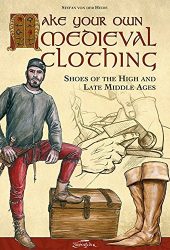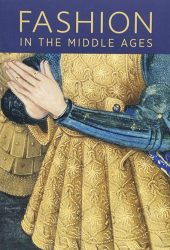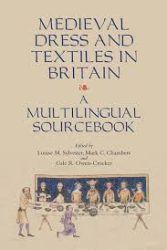The medieval gambeson, also known as an arming coat or padded jack, was a quilted, padded garment worn as protective armour.
Typically made of layers of fabric, such as linen or wool, the gambeson was stitched together in a diamond or rectangular pattern.
The gambeson provided padding and some protection against cuts, impacts, and even arrows. It was often worn under plate armour or chainmail to absorb and distribute the force of blows in combat.
The gambeson varied in thickness and could have sleeves or be sleeveless, depending on the desired level of protection and the wearer’s needs.
History of the Gambeson
The origins of the gambeson can be traced back to ancient times, with similar padded garments used by various civilizations for protection in combat. However, its widespread use in medieval Europe began around the 12th century.
During the early medieval period, chainmail was the primary form of armour. However, as weapons evolved, chainmail alone became insufficient to protect against blows from heavier weapons, such as swords and axes. To address this, warriors started wearing padded garments underneath their chainmail as additional protection. These early padded garments eventually developed into the gambeson.
As armour and warfare evolved, so did the gambeson. In the 14th century, plate armour began to replace chainmail, and the gambeson adapted accordingly. It became more tailored and fitted, designed to be worn beneath plate armour.
By the 16th century, with the increasing prominence of firearms, the use of armour, including the gambeson, gradually diminished. It was replaced by specialized protective garments designed to withstand the impact of bullets.
Style and Type of Medieval Gambesons
The gambeson was typically made of layers of fabric, such as linen or wool, stitched together in a quilted pattern. The layers provided padding and cushioning against impacts, reducing the risk of injuries from blunt force. The quilting pattern, often in diamond or rectangular shapes, helped distribute the force of blows evenly across the garment.
Although its use declined over time, the gambeson remains an integral part of medieval history, representing an early form of protective armour that played a crucial role in safeguarding warriors during the Middle Ages.
Different types of gambesons varied in design, materials, and construction techniques. Here are a few notable examples of different types of medieval gambesons:
Early Gambesons: The early gambeson, also known as a quilted gambeson, was a simple and lightly padded garment. It was typically made of several layers of fabric, such as linen or wool, quilted together in a diamond or rectangular pattern. The early gambeson provided some protection against cuts and impacts but was not heavily padded compared to later variations.
Military Gambesons: As armour and warfare advanced, gambesons evolved to meet the demands of combat. Military gambesons were often thicker and more heavily padded than the early versions. They provided better protection against blunt force and could help absorb the impact of weapons. Military gambesons were commonly used by soldiers, particularly infantrymen and men-at-arms, who did not have full suits of plate armour.
Jack of Plates: The jack of plates was a specialized type of gambeson that incorporated small plates or discs of metal sewn into the garment. These plates provided additional protection against thrusting attacks and improved defence against cutting weapons. The jack of plates was popular during the 14th and 15th centuries and was worn by knights and men-at-arms.
Pourpoint: The pourpoint was a type of gambeson that emerged in the 14th century and gained popularity in the 15th century. It was a more tailored and fitted garment, often worn as a standalone outer garment rather than being concealed beneath armor. The pourpoint had a more fashionable and decorative appearance, featuring lacing or buttons for closure and sometimes elaborate embroidery.
Arming Doublet: The arming doublet was a specialized gambeson worn specifically under plate armour. It was designed to provide a snug and comfortable fit, ensuring the plate armour could be worn over it securely. Arming doublets were often made of padded layers and had arming points or points of attachment to fasten the plate armour.
Image Gallery: Gambesons in Medieval Manuscripts & Art
Are you looking for specific examples of gambesons represented in medieval art? Here are some highlights.
